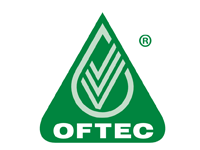Information
All the infomation you need
Magna Clean® sets an industry standard for plumbing and heating engineers when it comes to protecting and maintaining both new and existing central heating systems.
Developed by independent heating engineer Chris Adey, the arrival of Magna Clean Professional on the market has generated considerable interest among boiler manufacturers and service professionals throughout the sector. It is widely recognised as a major breakthrough in central heating system maintenance.
In an age of advanced and high efficiency gas and oil boilers there has never been a greater need to safeguard what amounts to one of the most important and most expensive investments in the modern home – The central heating system.
Even a small build-up of iron oxide and non-magnetic deposits in a standard or modern efficiency boiler results in substantial efficiency loss and fuel wastage. So, not only does the system perform inadequately, it also costs more to run and maintain.
Magna Clean Professional is a proven, high efficiency, full-flow, magnetic and non-magnetic filter designed to tackle all central heating systems removing virtually 100% of suspended magnetic debris.
https://youtu.be/xZeFcnAt6po
Reasons for needing a power flush.
Normally on central heating systems, over time you get a build up of sediment inside the radiators and pipe work commonly known as “sludge” this is caused by the internal side of the radiators starting to decay. Leaving a sludge like substance in the system.
Now if there is enough sediment build up in the heating system then this will start to cause problems, the most common problems due to sediment build up in a central heating system are, radiators completely not getting hot at all, or if you find that your radiator is getting partially hot mainly at the top but cold at the bottom, this is because the sediment is made up of small metal filings which are heavier than water which sit in the bottom of the radiator causing the bottom half of the radiator to block the flow of water stopping the bottom from getting any heat. Another very common problem that is found is that your central heating circulator pump, will over time block up with sediment causing it either to not work to its true potential or stop completely, in this case none of the radiators will get any heat. Unfortunately your boiler is a great place for sludge to build up due to its delicate internal parts, when a boiler does start to catch the sediment, normally means that it will start to kettle, “kettling” this is where the flow of water is restricted going through the boiler, but because the boiler thinks that there is the correct flow, is continues heating the water as it normally would, causing a lesser flow of water going through, which in this case will start to “boil” in this circumstance you will hear knocking, banging and whistling sounds coming from your boiler.
What’s involved in a power flush?
We like to do power flushing properly, so here is a detailed description of what happens when a power flush on a system is carried out,
Power flushing is carried out on EVERY boiler change.
A power flush will take up to 60-70% of sediment out of the system if done properly. Which can take up to a day or even two if needs be.
First of all we will enter the property laying out the appropriate dust sheets throughout the house, then we will drain the system down into a drain outside the property, so that the power flushing machine can be connected without any water being in the system, the power flush machine its self is a three horse power pump which with a chemical which gets connected to the system. Once it is connected it can be filled back up and the drain hose disconnected.
We use two types of chemical when doing a power flush. We use a product made by “Wessex chemicals” called “silt free” and “sludge and flux remover” these get flushed through the system to help remove the sediment from within the system. we have our own magnetic filter which will be put onto the power flush machine to catch any sediment as it comes through the machine, which gets cleaned out after every two radiators or if needs be every radiator. Combined with the chemicals we use a soft non marking rubber mallet to help aggravate the sediment by knocking each radiator one by one,
Once the machine is on and running, we open all of the lock shields on the radiators so that there is no restriction going into the radiator, once this is done we then zone down each radiator individually using the thermostatic radiator valve, isolating all of the radiators bar one, this gives that one radiator that is on the full force of the power flush machine. We then set a timer and let each radiator have a certain amount of time being flushed depending on the state that the system is in. Meaning it will be continued until it is running clear. Once every individual radiator on the system has been flushed through thoroughly we leave the machine running on all of the radiators to make sure that as much as possible can be removed from the system. once we are happy that the system is clean we run clean fresh water through at the same time as dumping the dirty old water out and will carry on this process until the water comes out of the dumping hose completely clean. Then the system can be drained back down.
Now that the system is clean the machine can be disconnected, if on an existing system or new boiler then the original or new parts will be fitted or put back to its original state. Including a new magnet filter which gets placed on the return on the system, before it goes back into the boiler, Preventing any further damage or future damage to the new or old boiler.
The system can now be filled back up with clean fresh water with added “system inhibitor” to help protect against sediment build up again, the amount of inhibitor put into the system is defined by the size of the central heating system. We use one tub for every ten radiators. Now that the system has been bled and is completely full. The system will need to be balanced correctly to get an equal heat around the property. This is done by adjusting the flow into the radiator using the lock shield side. This is taken place whilst the heating system has been fired up and it getting hot. Using a temperature gun we can tell the heat difference between each radiator. Now that this has been completed you are left with a cleaner and more efficient heating system.
Here at Whites plumbing and heating we fit mainly ‘Deso Bunded oil tanks’.
This is to insure that your storage of fuel is highly protected from all possible situations.
Now with Deso tanks they pride themselves on being excellent at what they do. They use the latest technology and equipment to insure the highest product quality. All tanks are created and built in house, there products comply with the latest European standards and cover a whole range of different products, from commercial to, agricultural to domestic tanks in all shapes and sizes gives you a huge range to choose from to fit to the properties specifications. There bunded tanks come with a 10 year guarantee. They have been designed to deal with all weather conditions; they are manufactured from high grade polyethylene giving them high impact strength and the latest UV protection.
Now our Oftec registered engineers fit fuel storage units to a very high standard with only the correct oftec regulations to insure no future problems.
Now a majority of people don’t recommend Plastic oil storage tanks because they have heard that they crack and split, so you are pushed towards the more traditional metal oil storage tank. Now this isn’t anything to do with the tank itself, if a plastic oil tank isn’t fitted to the correct regulations this can lead to a whole range of problems, if a plastic oil storage tank is fitted correctly it should have a minimum of 300mm around all sides of the base, now the base for the unit should be made from concrete and is very important that it is completely level.
Click here for information on Deso oil.
- TRV: Thermostatic radiator valve.
- PRV: Pressure relief valve.
- Kettling: this is where the flow of water is restricted going through the boiler, but because the boiler thinks that there is the correct flow, is continues heating the water as it normally would, causing a lesser flow of water going through, which in this case will start to “boil” in this circumstance you will hear knocking, banging and whistling sounds coming from your boiler.
- F&E tank: Feed and expansion tank. On a non pressurised system, this is the smaller of the two tanks you will have in your loft to feed the central heating system and to help allow for expansion.
- Magna clean: magnetic filter which is placed on the return of the central heating system to pick up sediment to prevent the boiler from any build up of sludge.
Filling loop: these are found on pressurised systems that do not have roof tanks and are fed off of the mains pressure. This is normally found underneath the boiler or in other cases by the cylinder so that the system can be filled up if there is any loss of pressure. - Lock shield: this is the non thermostatic valve on the other side of the radiator used to restrict the flow of water through the radiator.
- Sediment/sludge: this is what builds up in central heating systems over time, due to the internal side of the radiators decaying leaving small metal filings in the radiators reducing the flow rate through them therefore causing less heat from the radiator.
- Inhibitor: this is a general purpose treatment for central heating systems, this product is left in the heating system to help protect and prevent scale and corrosion within the system, helping to prolong its life.
- Power flush cleaner chemical: is a sludge and flux removing chemical that is used when carrying out a power flush. It is a heavy duty cleansing product that penetrates corrosion from within the radiators and pipe work, therefore helping to take the sediment out of the system. This works most effectively when using a power flush machine. For more information on Power Flush click here.
- Silt free: this is another product we use during a power flush. Silt free lifts the sediment in the system, so combined with the force of the water from the power flush machine this helps to take out as much sediment as possible.
- Flue: this is the boilers “exhaust”.
COVID-19 Infomation
HAVE AN EMERGENCY?
Please call our out of hours mobile number...
Contact Phone
07769 320 052
affiliated companies & accreditations






